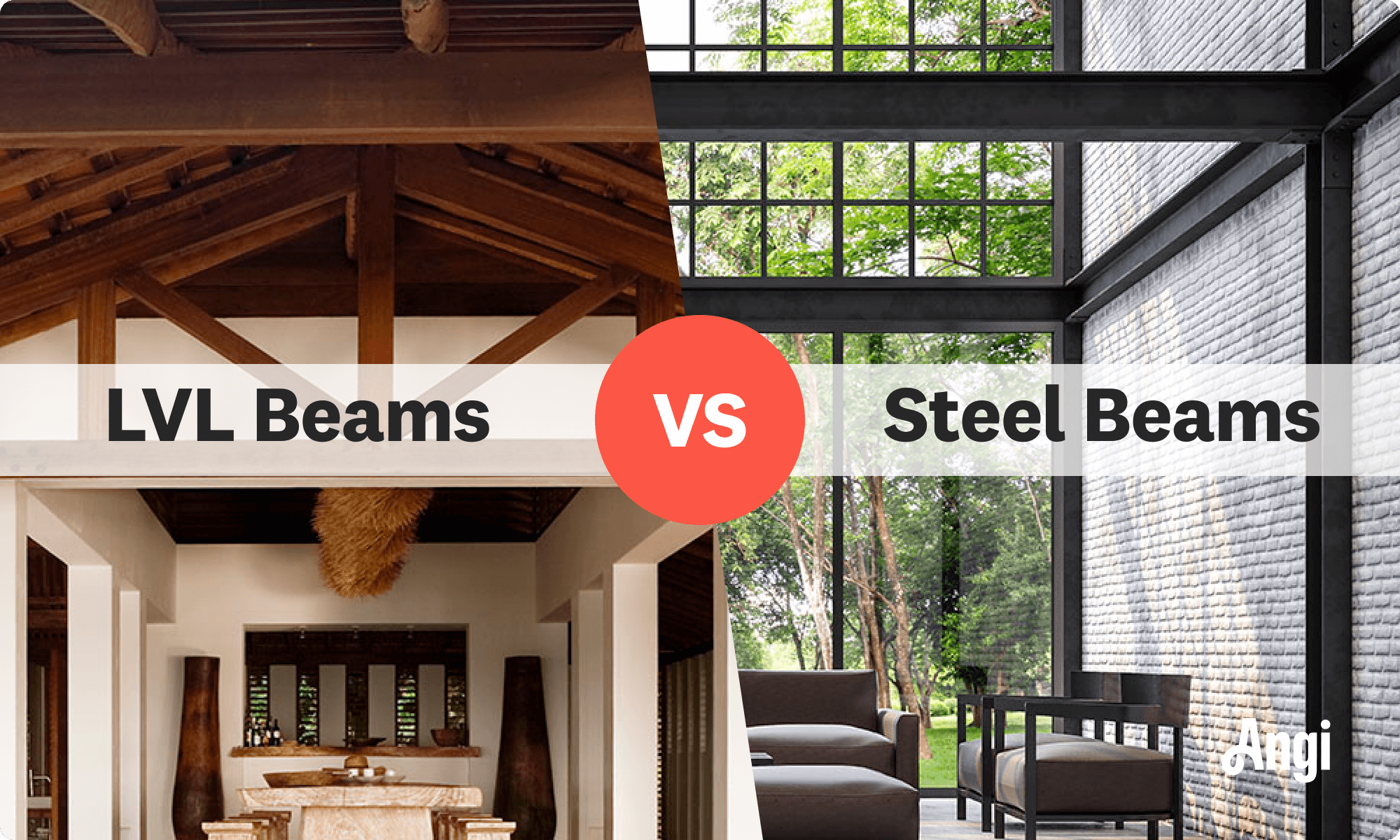Everything to Know About LVL Beams
There's a lot to love about LVL beams


LVL beams are engineered wood products used in nearly all homes today.
These composite beams consist of several layers of thin wood held together by adhesive.
LVL beams are extremely durable and ideal for both interior and exterior use.
You may need to worry about warping concerns in some instances.
LVL beams typically cost around $30–$12 per linear foot
If you're looking for engineered wood beams for your upcoming home project, LVL beams should certainly be at the top of the list. As one of the strongest engineered wood products available, LVL is great for stabilizing heavy loads. But what is an LVL beam? This guide will help you become familiar with this popular building option.
What Is an LVL Beam?
A laminated veneer lumber (LVL) beam is a commonly used engineered wood product. In fact, LVL beams are used throughout nearly every room when building a home. As a type of structural composite lumber (SCL), the LVL beam is constructed using several thin layers of wood held together with an adhesive.

Types of Wood Used for LVL Beams
LVL beams can be made using different types of wood, depending on the manufacturer. Here are some of the most common types you’ll find:
Douglas fir
Poplar
Southern yellow pine
Larch
Where Are LVL Beams Used?
Home builders use LVL beams in a variety of different ways. They are suitable for both interior and exterior use. Here are the most common uses for LVL beams:
I-beam joists for flooring spans
Headers for wide windows
Carrying beams
Rim boards
Roof trusses
Patio doors
Openings around garage doors
Decks
Open-concept kitchens
Advantages of LVL Beams

If you’re comparing wood beams versus steel beams, you might land on LVL beams for a new build, renovation, restoration, or addition. With so many options available today for construction materials, it's important to know the advantages and disadvantages of every choice. Here are the primary benefits of choosing LVL beams.
Customization
LVL beams are customizable, making them easy to adjust based on your home’s needs. Due to the manufactured aspect of LVL beams, you aren't bound by the log length. They also come in different widths, lengths, shapes, and thicknesses, and their versatility allows them to be used throughout a home.
Affordability
Compared to other timber options, LVL beams are less expensive. And since they’re typically used for large projects, the lower the price, the better.
Resilient
LVL beams are extremely resilient against wind, heavy loads, and more. Quality control during LVL production is excellent and comes with minimal defects, which helps add to the material’s resiliency.
Disadvantages of LVL Beams
When constructing buildings, LVL beams have gained popularity for their strength and versatility. However, like any building material, LVL beams also come with their own set of drawbacks. Understanding these limitations can help builders and homeowners decide whether LVL beams are right for their construction projects.
Difficult to Install
Each brand of LVL beam has precise installation requirements and specific conditions that must be met when storing them during projects to avoid rot. This requires a lot of precision on the installer’s part and should be taken care of professionally.
Can be Damaged
LVL beams, while resilient, do have damage risks. Their layered design can cause warping or splitting, and they are also at risk of delamination. LVL is not ideal for external facades unless you apply a special treatment or the damage risks are even higher.
Not Drill-Friendly
While LVL beams offer some great customizable features, you shouldn’t drill holes into them, as they can damage the structural integrity. This may be a roadblock, depending on your project needs. Talk to a local framing contractor if you’re unsure whether they’re right for your work.
How Much Does an LVL Beam Cost?
The average LVL beam cost is $3 to $12 per linear foot. If you're hiring professionals to install LVL beams, installation costs range from $50 to $200 per linear foot.
Based on what you plan to do with your LVL beam, it's critical to call everyone from a licensed architectural engineer to a local foundation repair contractor to ensure you use the right beam size and placement for your renovation project.
Frequently Asked Questions
LVL beams can span up to 60 feet. However, the standard size for most LVL beams is between 24 feet and 44 feet. Longer beams may be available on request from specialized suppliers. When planning a project, it's essential to understand the difference between joists versus beams to ensure you're spacing beams properly.
The standard thickness for an LVL beam is between 1.75 inches and 7 inches. However, you can order LVL beams in non-standard sizes as well. When you work with a contractor, they can source beams that are the appropriate size for your project for you after assessing your blueprints.
Because of their composite structure, cutting or drilling LVL beams can compromise their integrity. We strongly advise contacting a general contractor or structural engineer before making any alterations to LVL beams. Professionals can also answer questions about choosing between a pier and beam versus slab foundation when designing your project.
Yes, you can paint or finish LVL beams. Some people apply paint or coating to cover up the dull or patchy look left behind by the resins used when manufacturing LVL beams. It's essential to prepare the surface properly before painting. This includes cleaning the beams and ensuring they are free of dust, dirt, and any loose particles. You should also apply a primer before painting to get a smooth, even finish.















